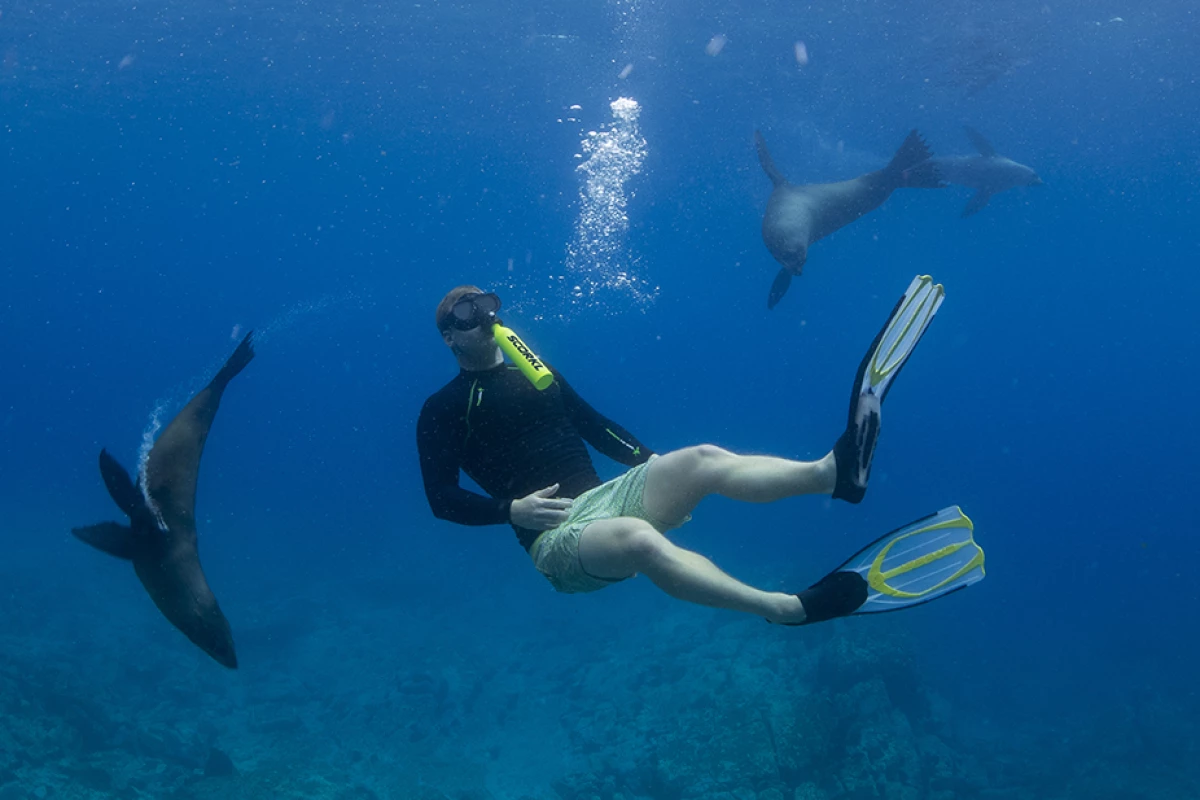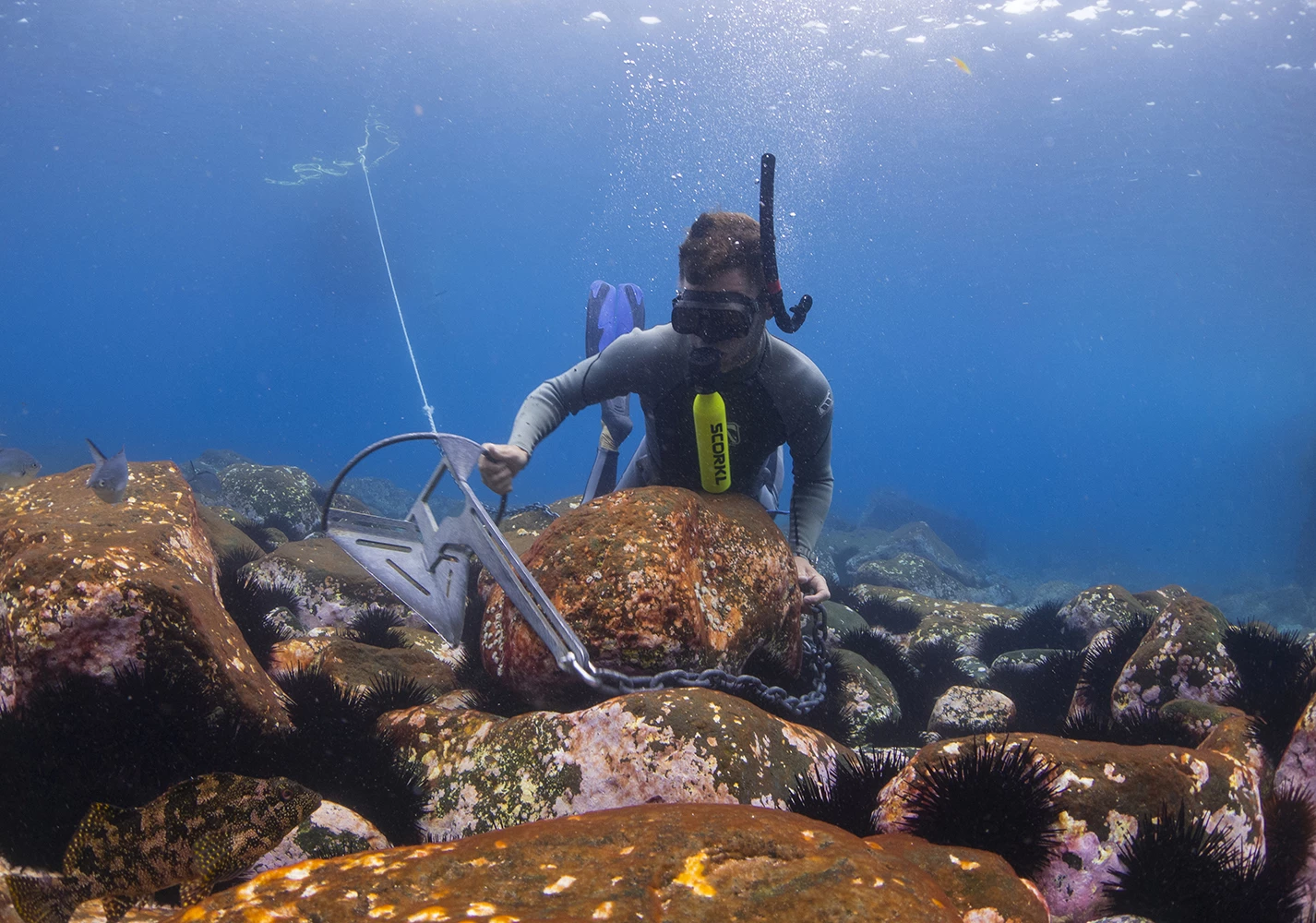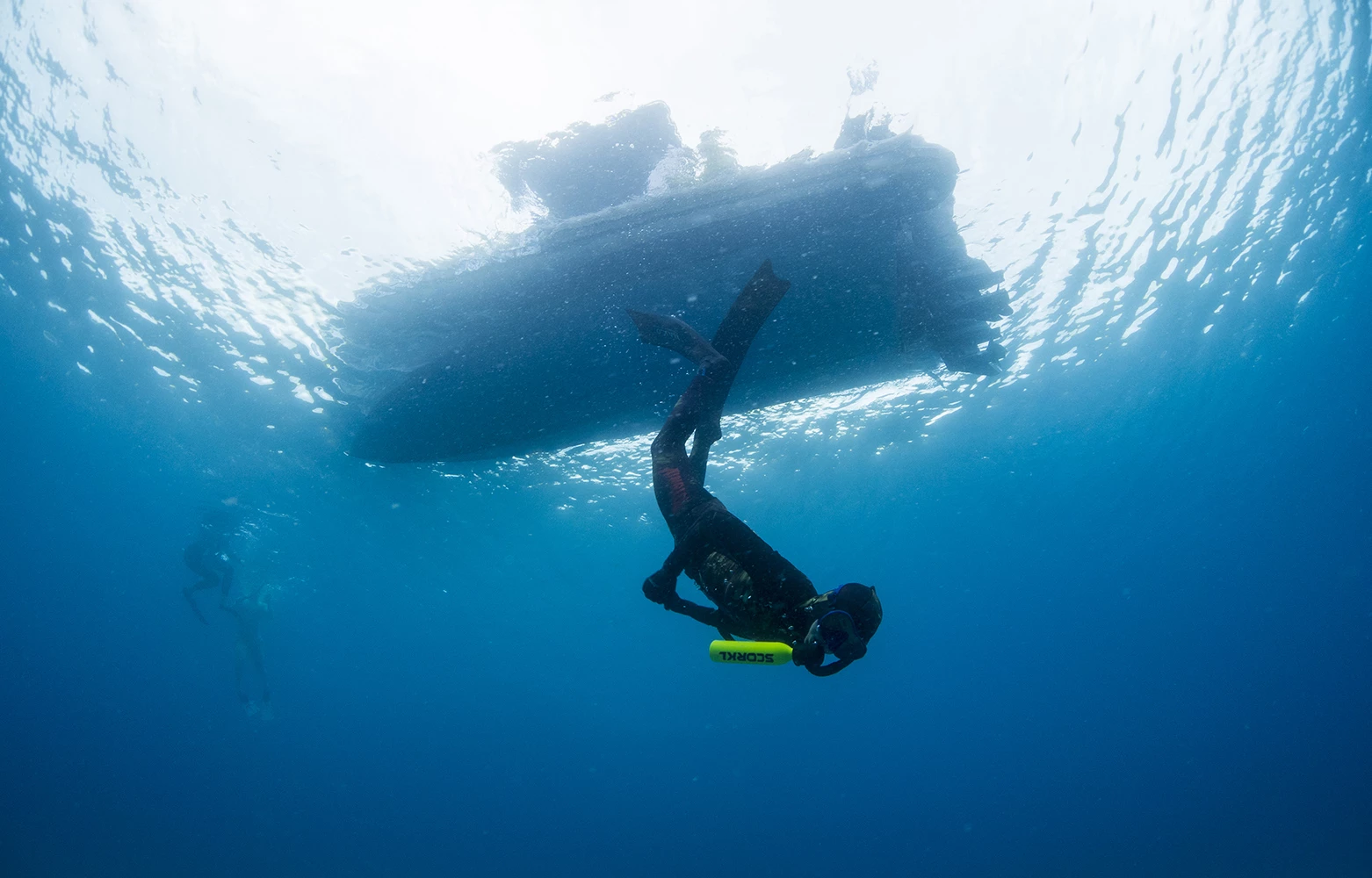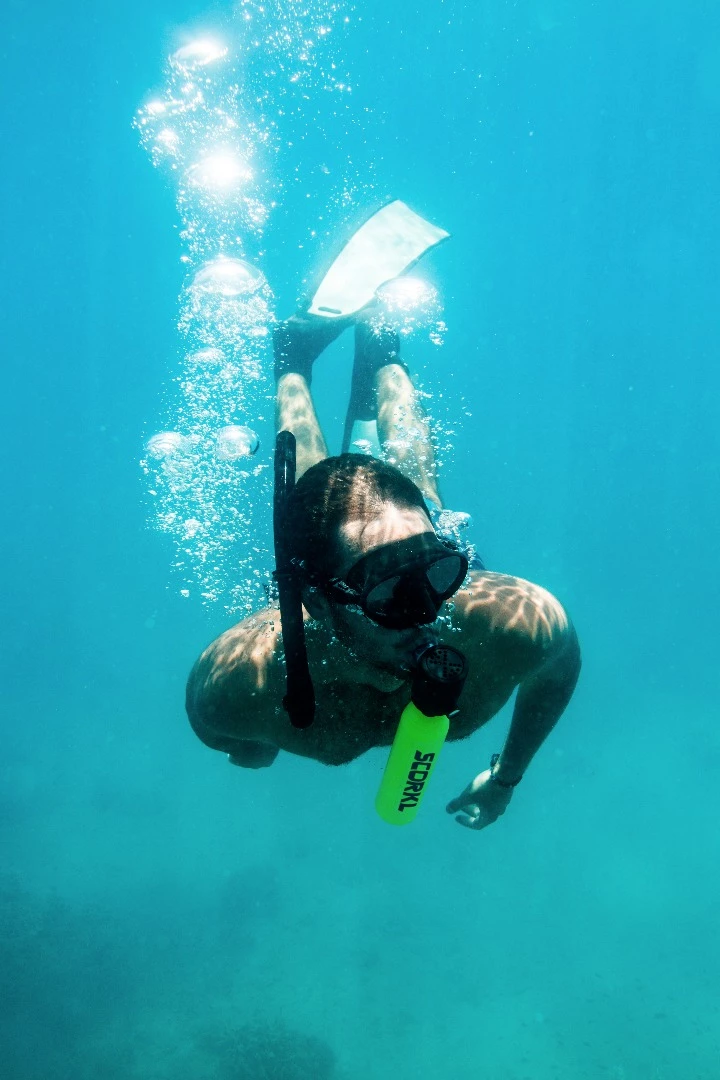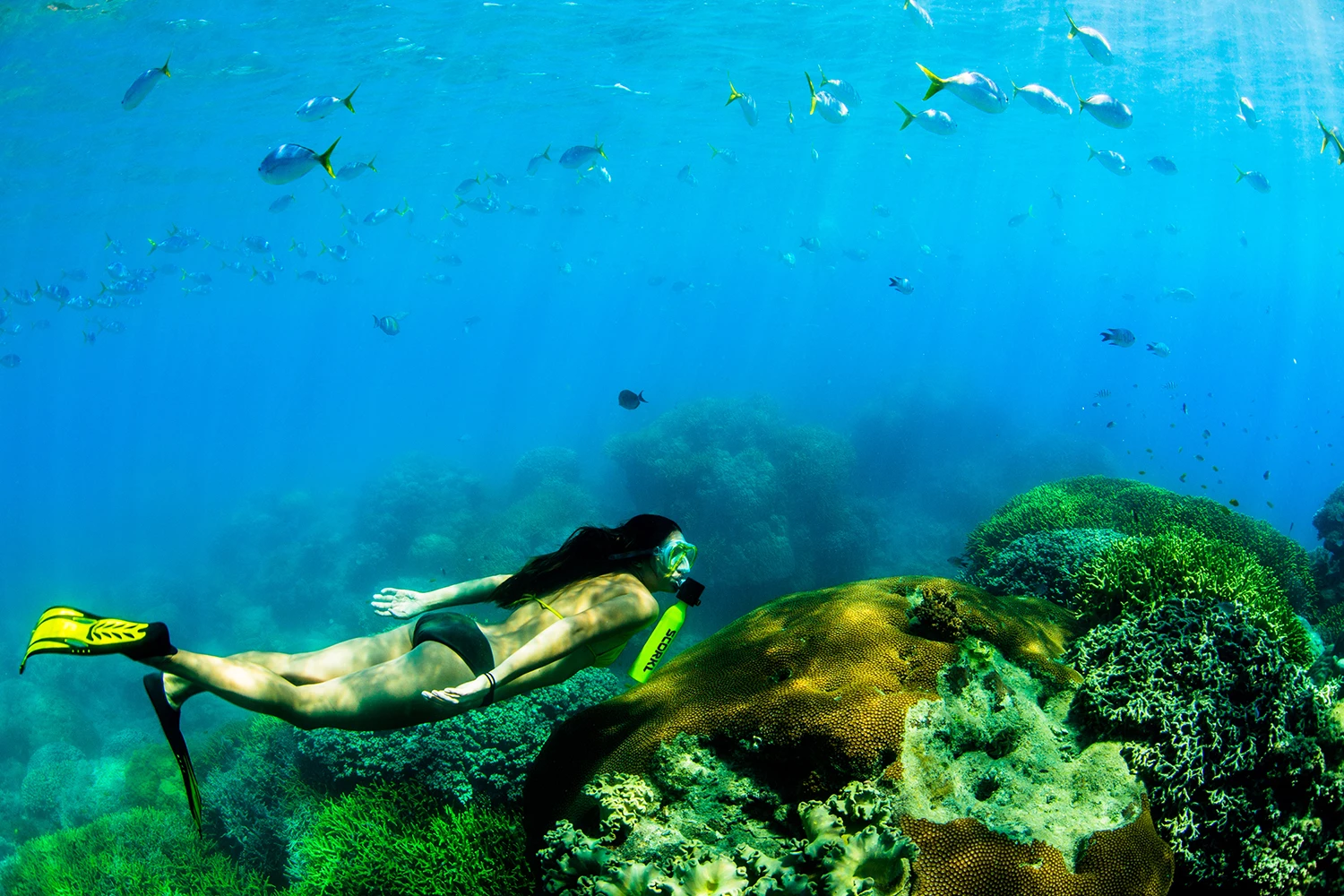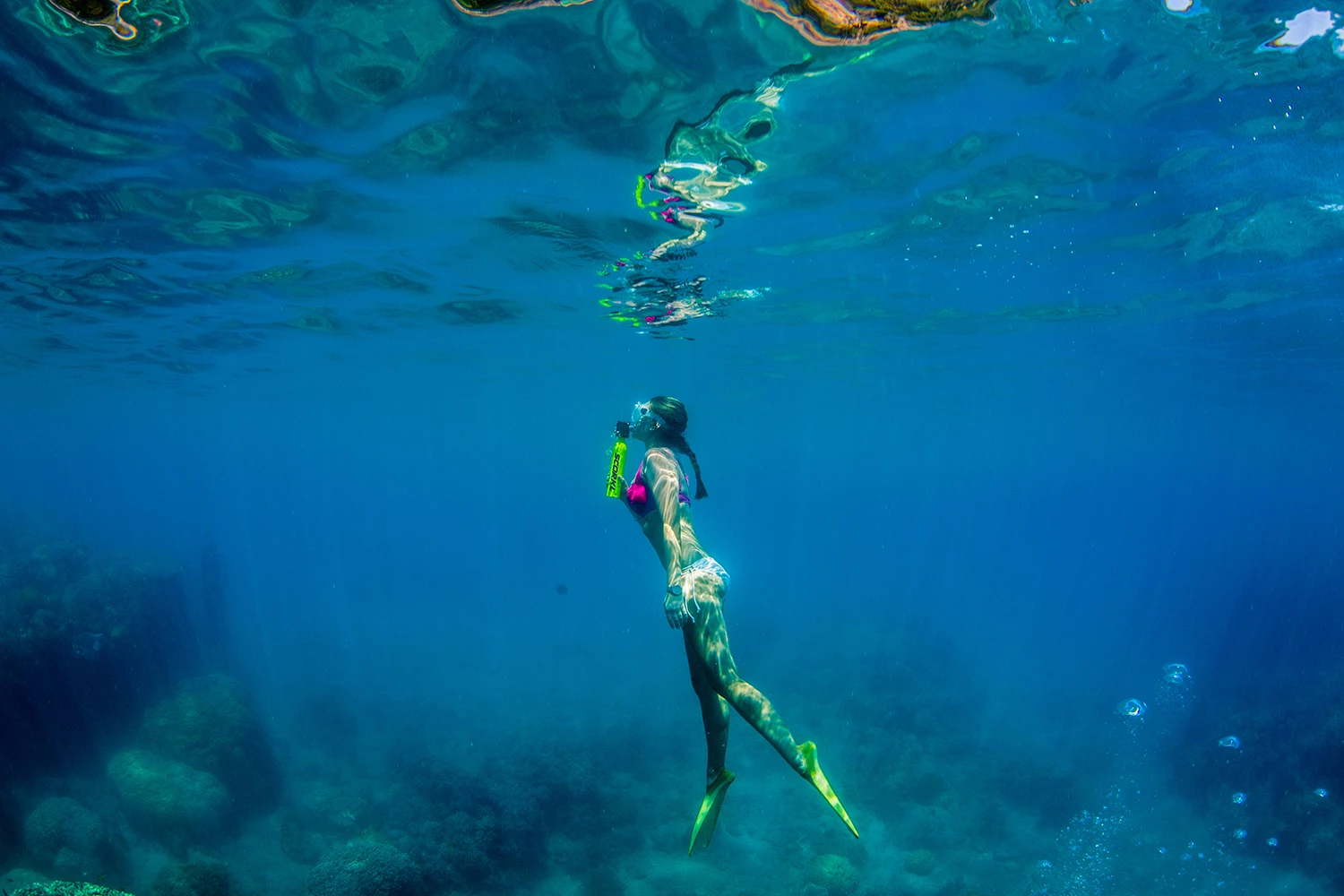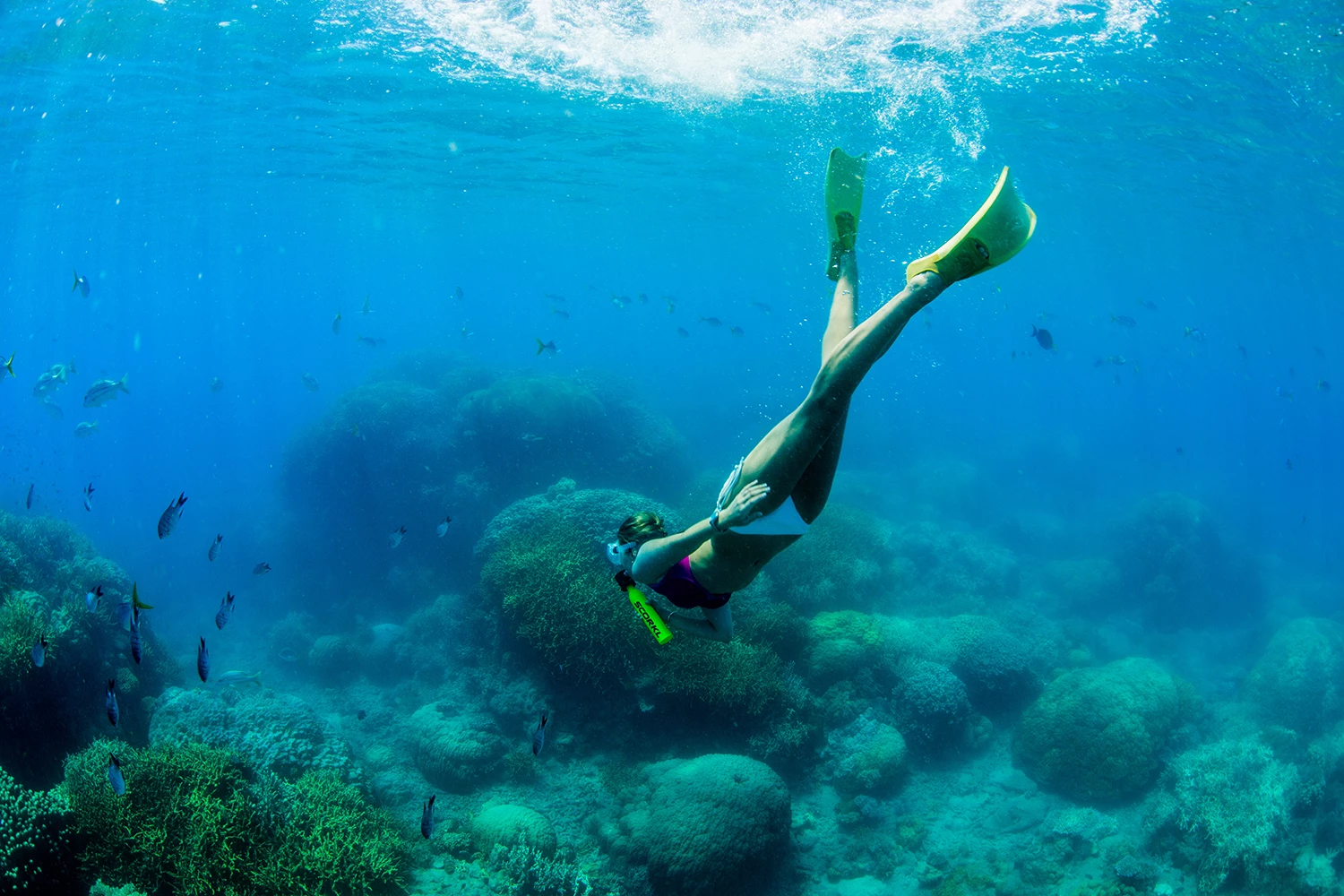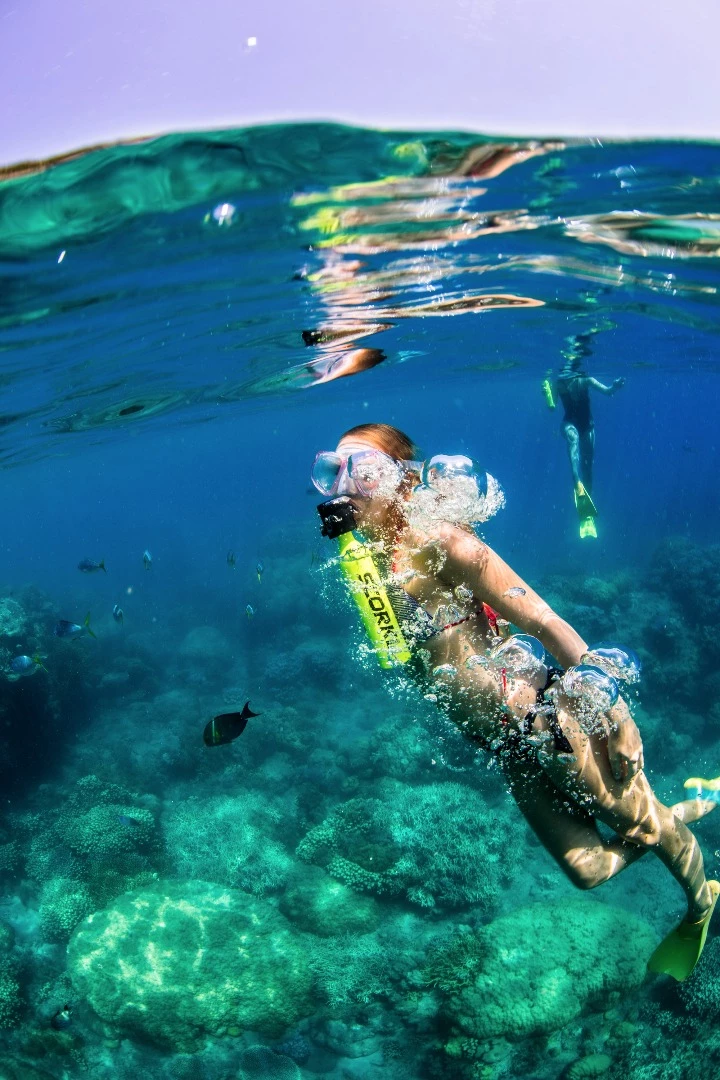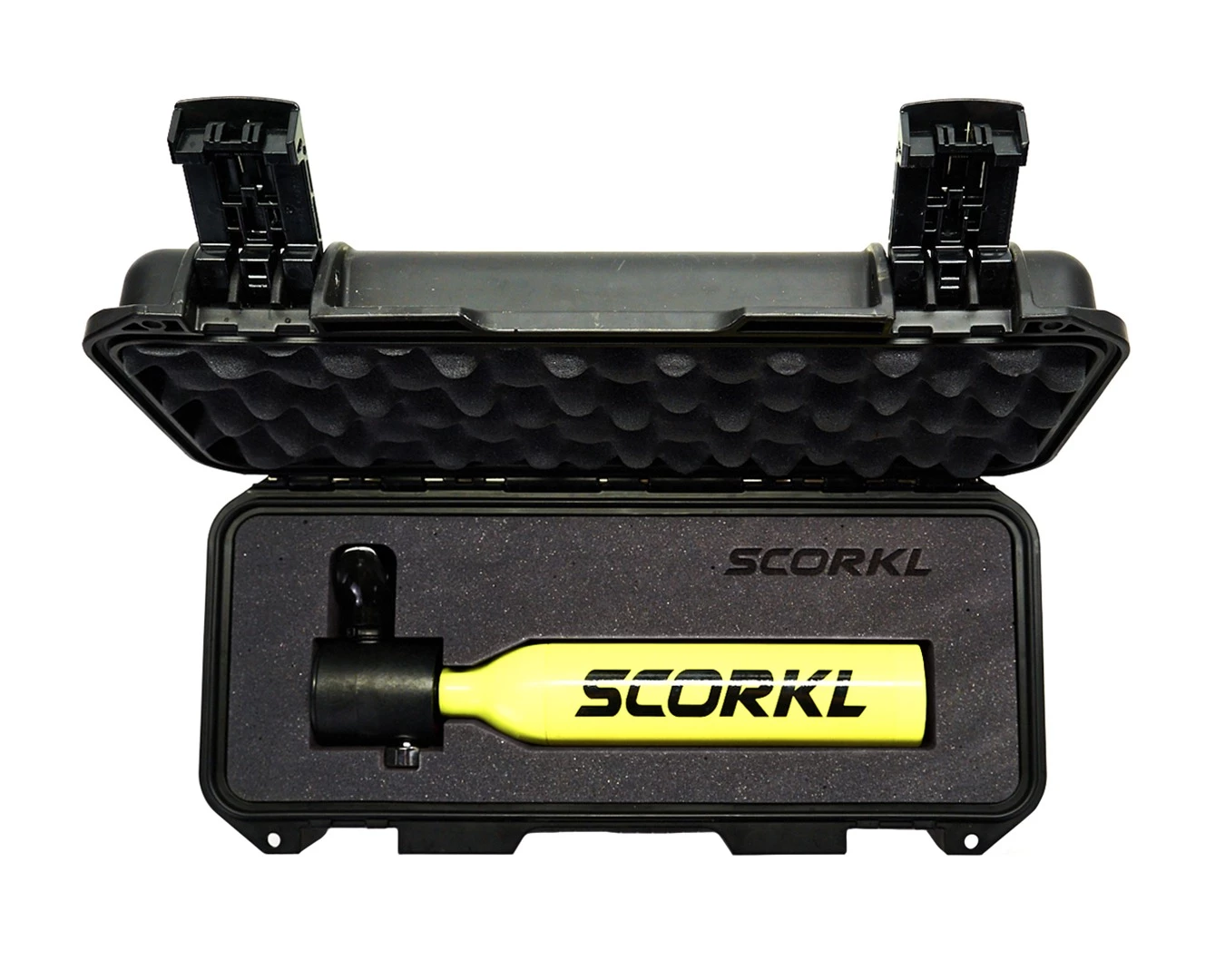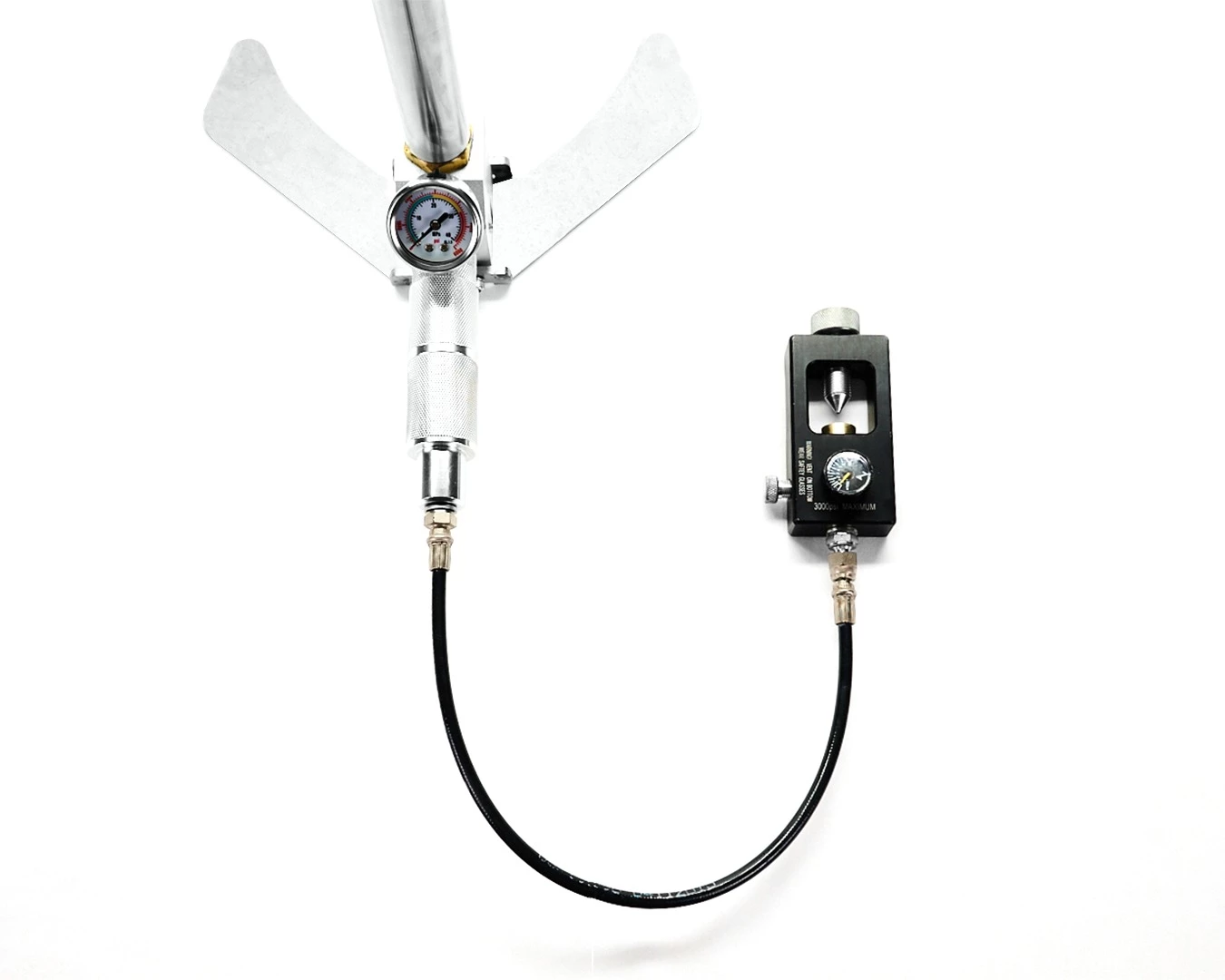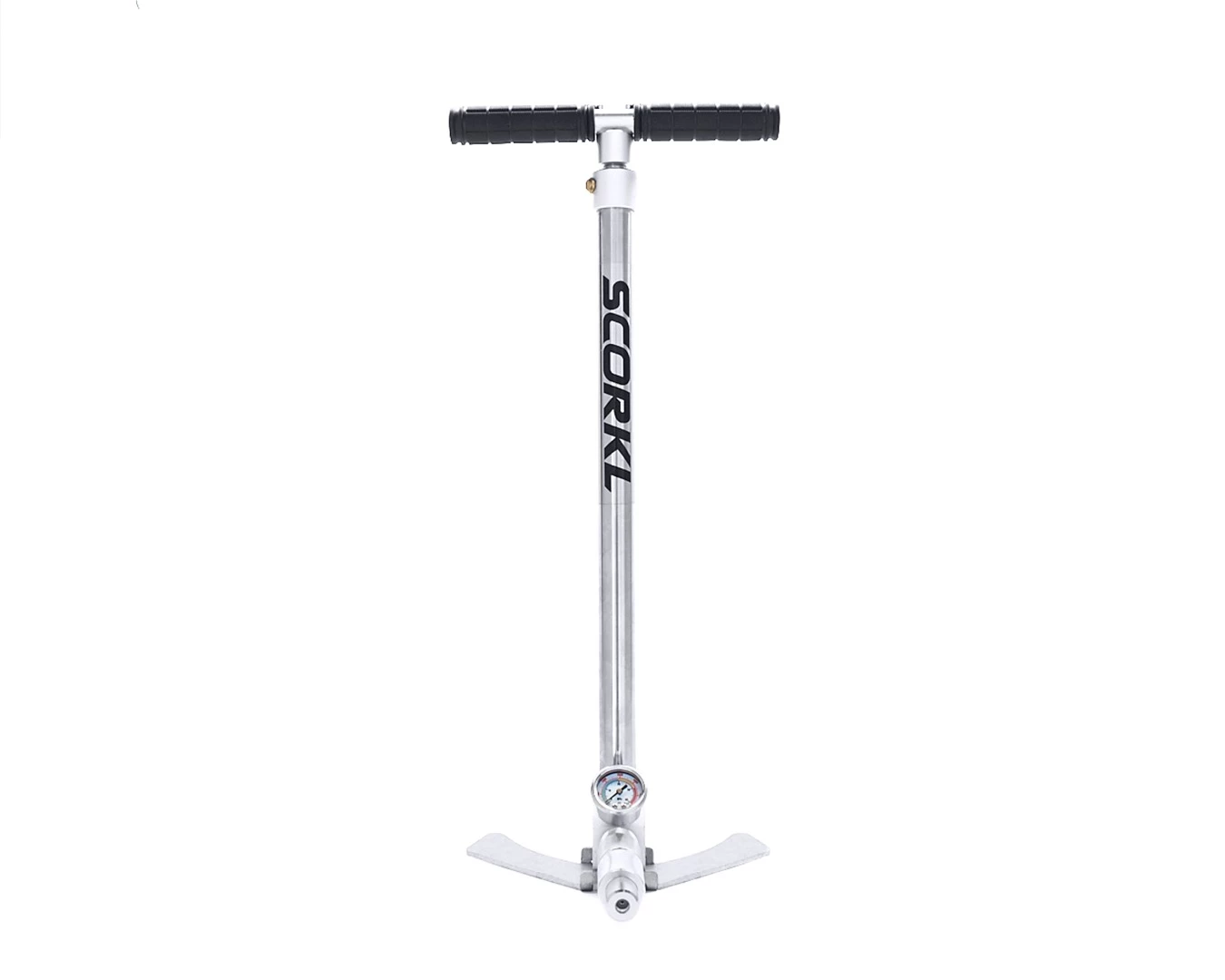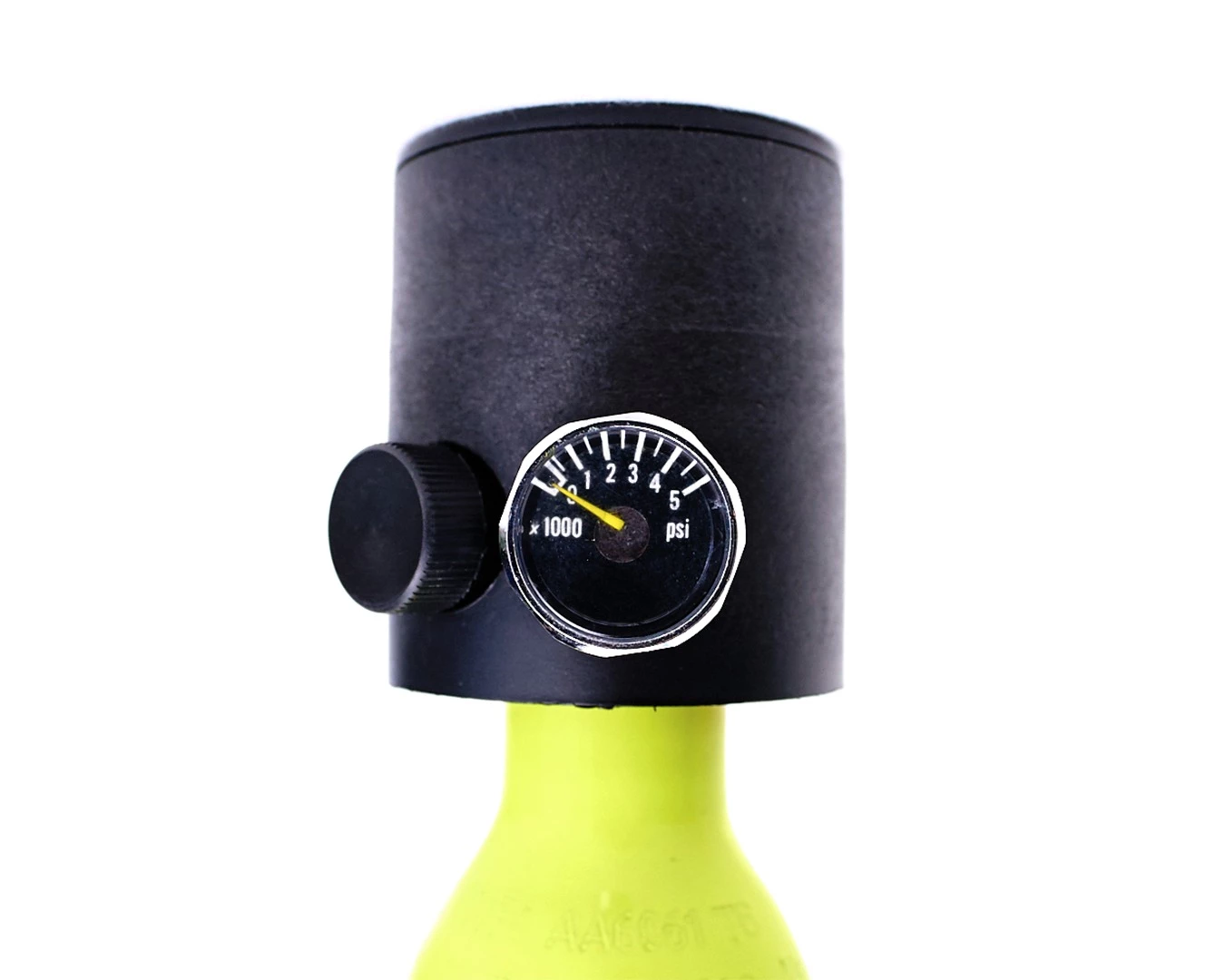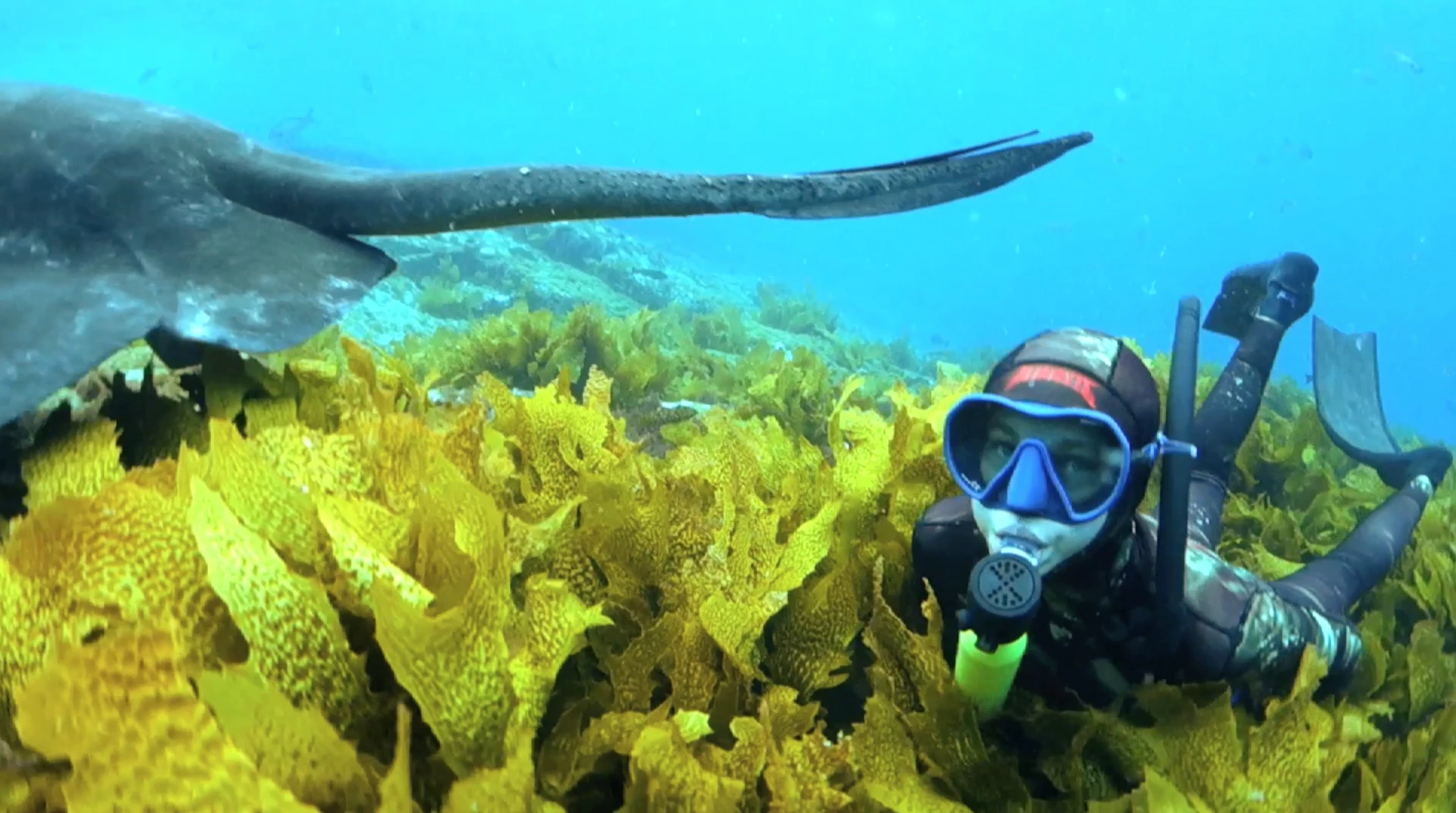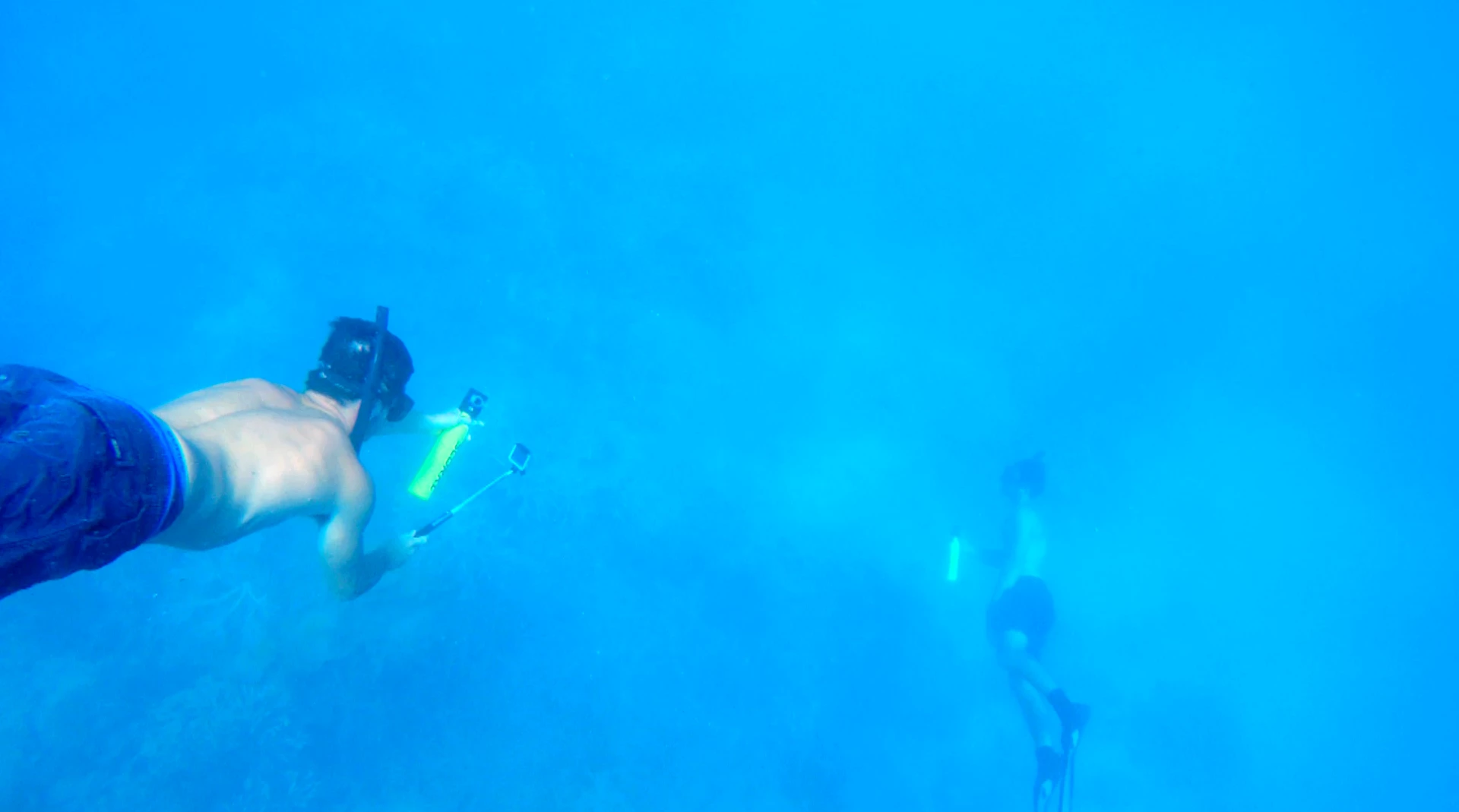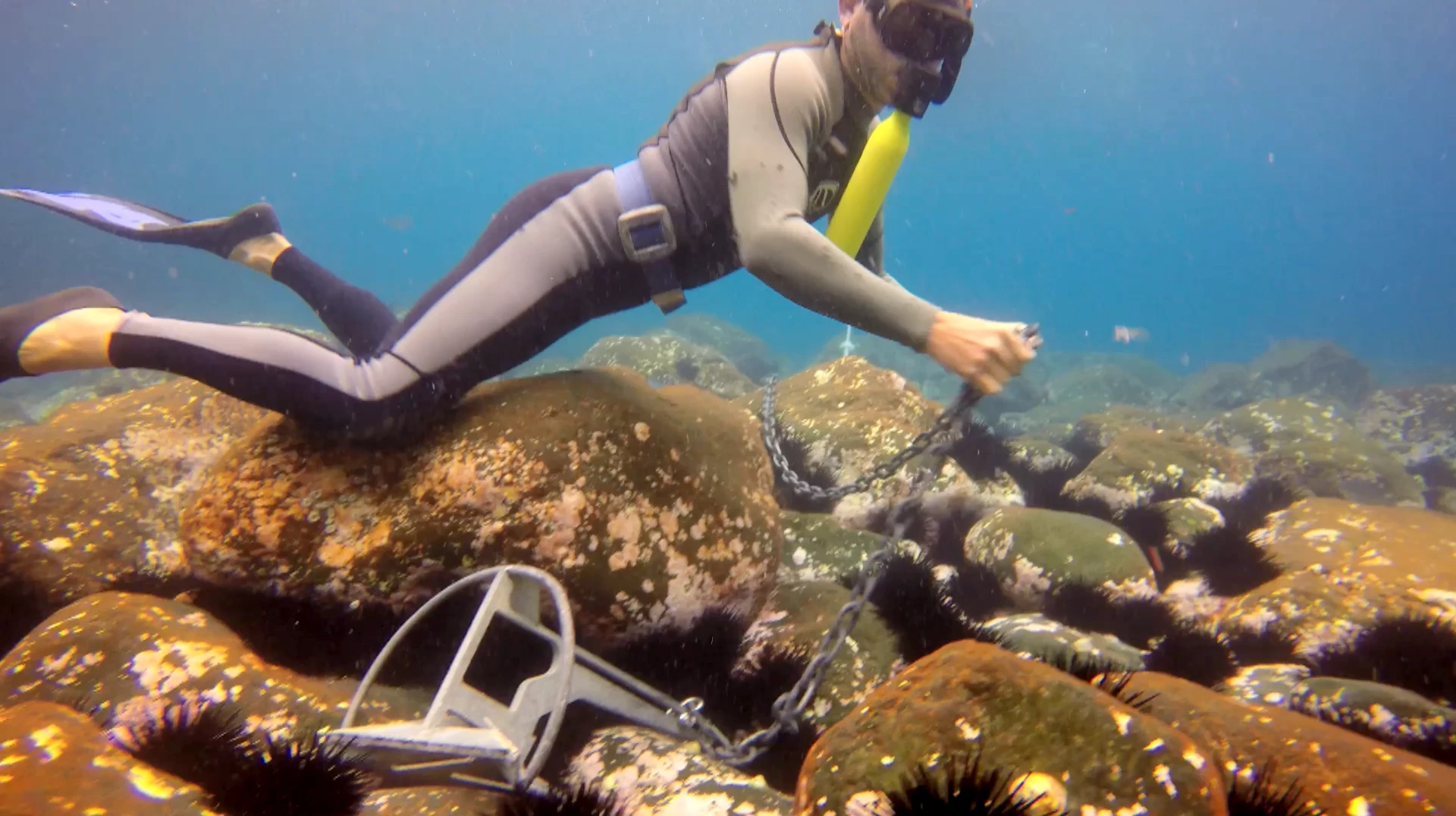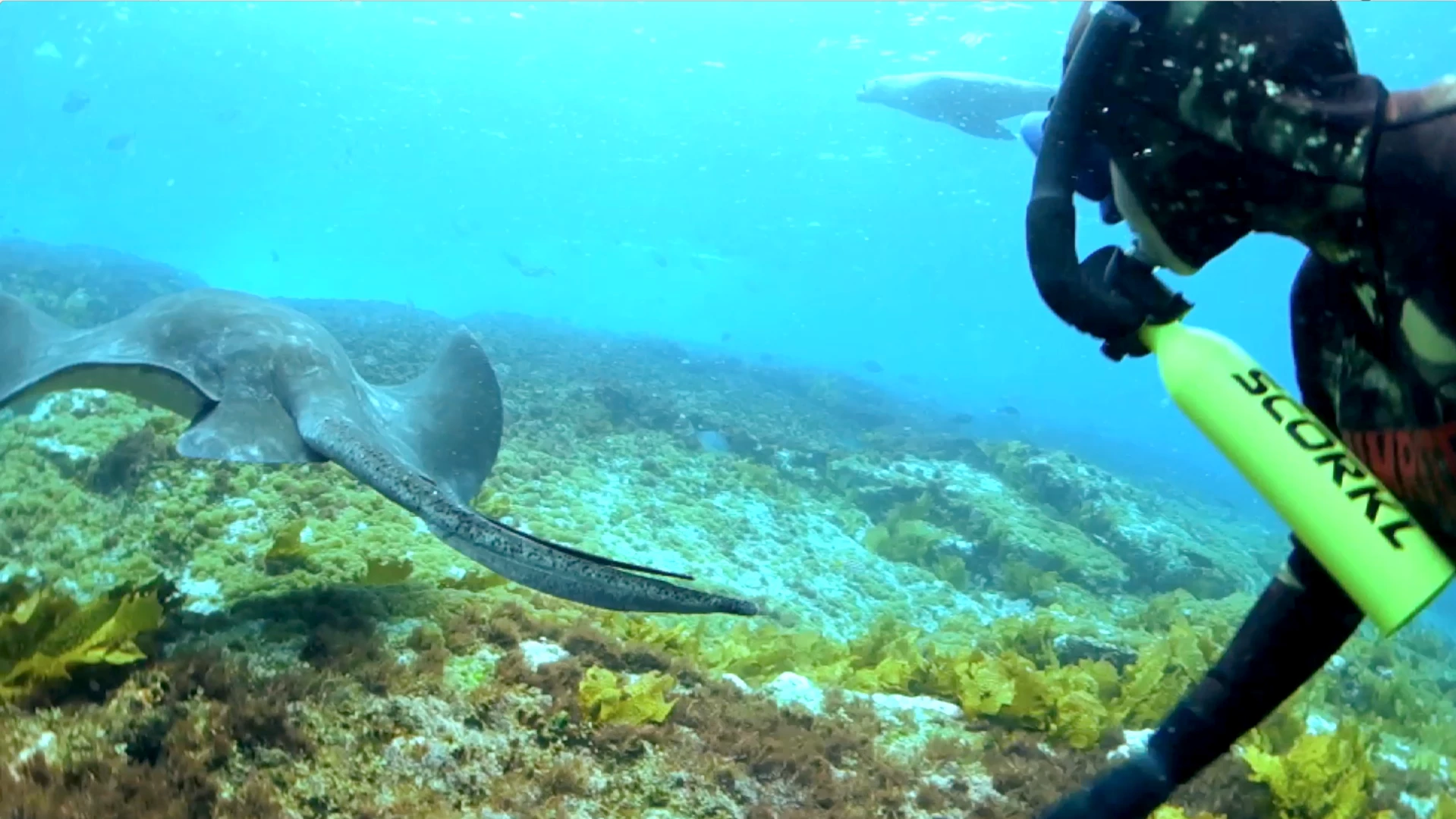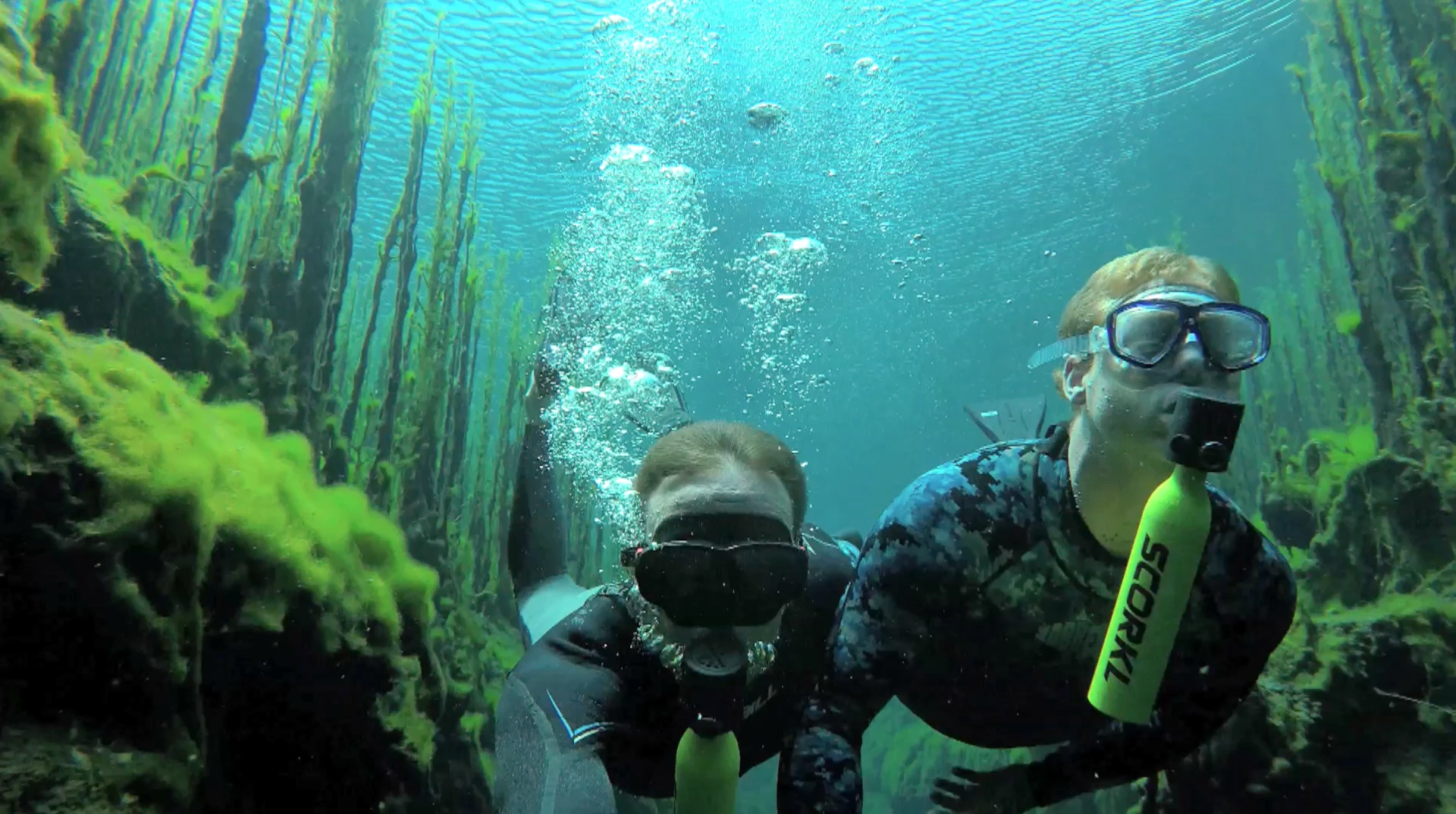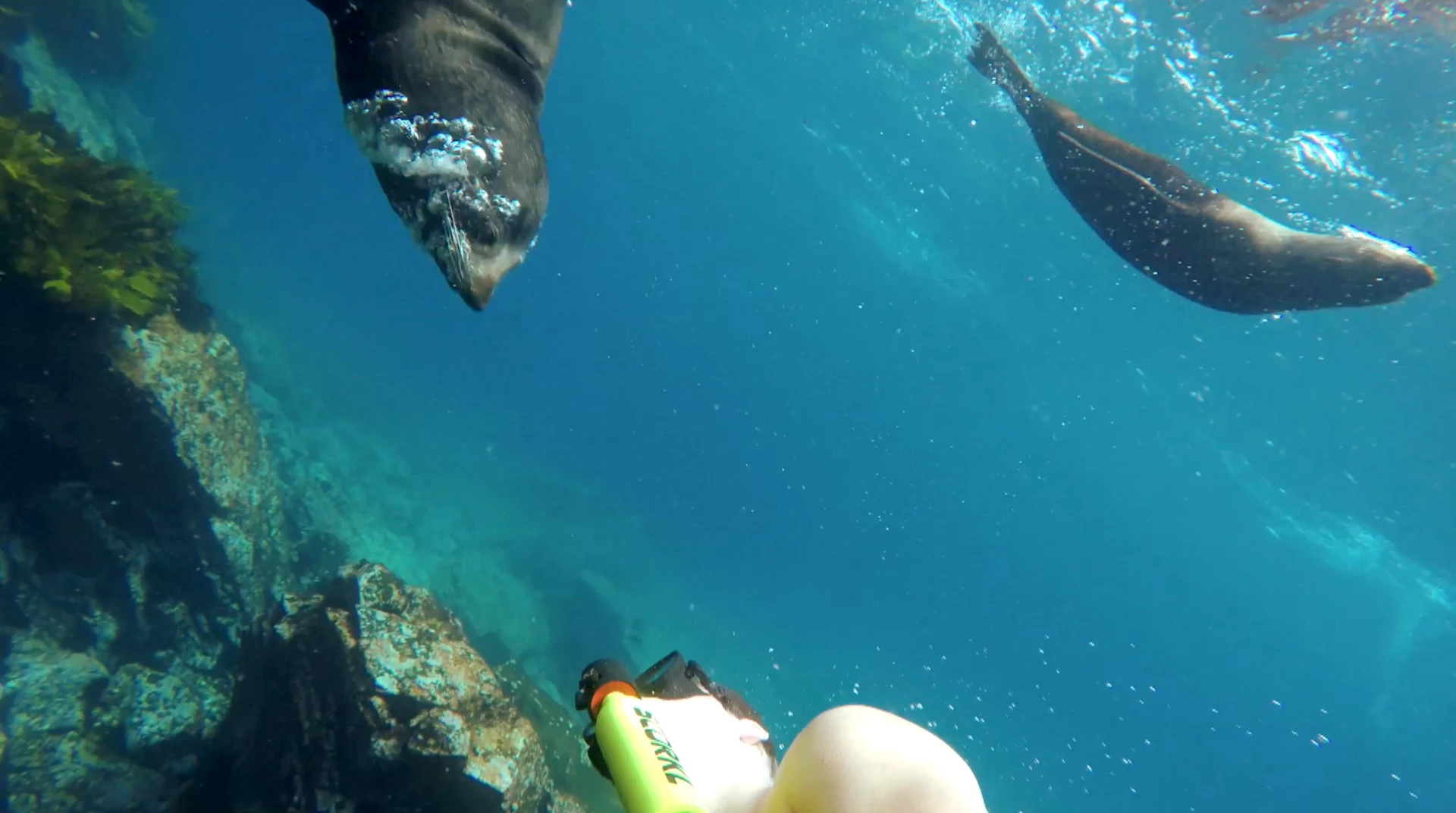Scorkl is small, lightweight breathing-device you can pump up yourself, meaning it is a one-time-cost to be able to swim underwater for 10 minutes at a time, or hang a couple of Scorkls on your belt and go much longer. The Scorkl regulator is always-on, so it is a breathe-on-demand system which combines with a built-in pressure gauge that tells you how much air is left at any time.
The Scorkl compact breathing device launches today on Kickstarter, with pledges starting at US$200. If you don't have a compressor to recharge the Scorkl, there's a $200 high pressure pump available so you can fill it yourself.
Hence the $400 outlay is a one-time-cost to enable you to swim underwater for 10 minutes forever more. If you hang a couple of Scorkls on your belt, you can go much longer adding $200 for each 10 minutes of underwater time – again, at a one-off cost.
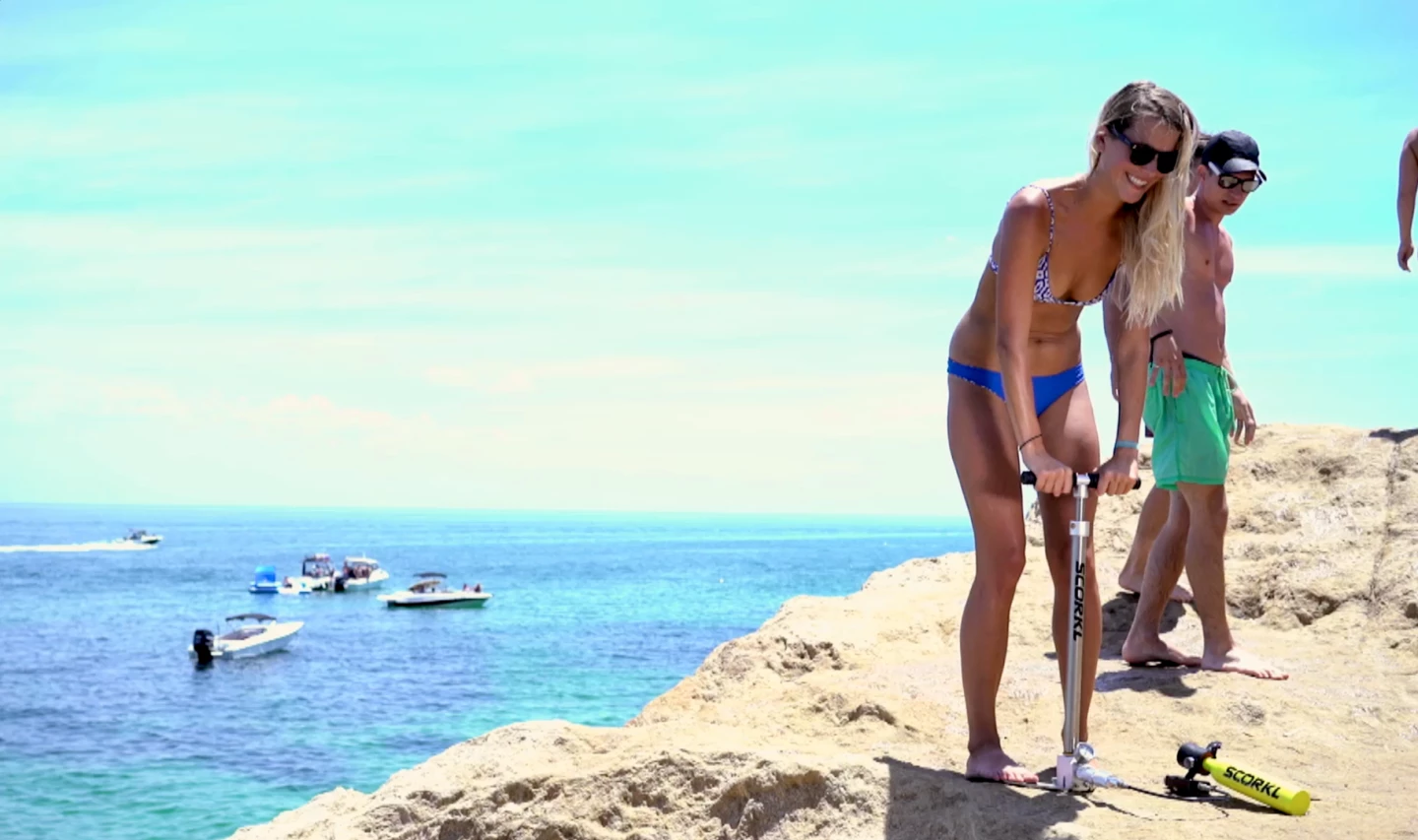
The Scorkl could also be one of those items which might be very useful in an emergency. Such as dropping a pair of $400 sunglasses into 15 feet of water.
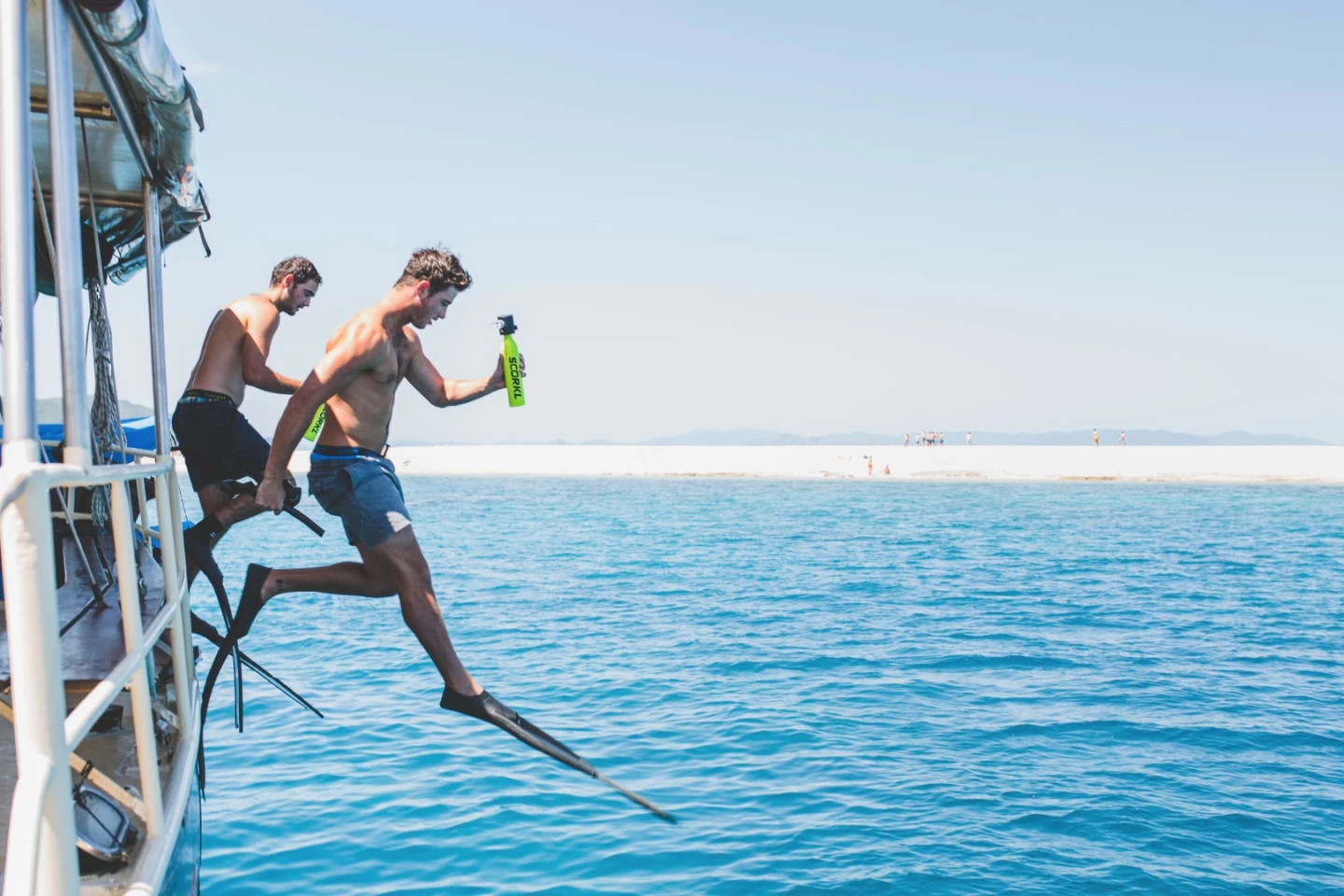
... or spending long enough underwater to clear a tangled propeller ... every boat owner will recall times when a Scorkl would have come in handy.
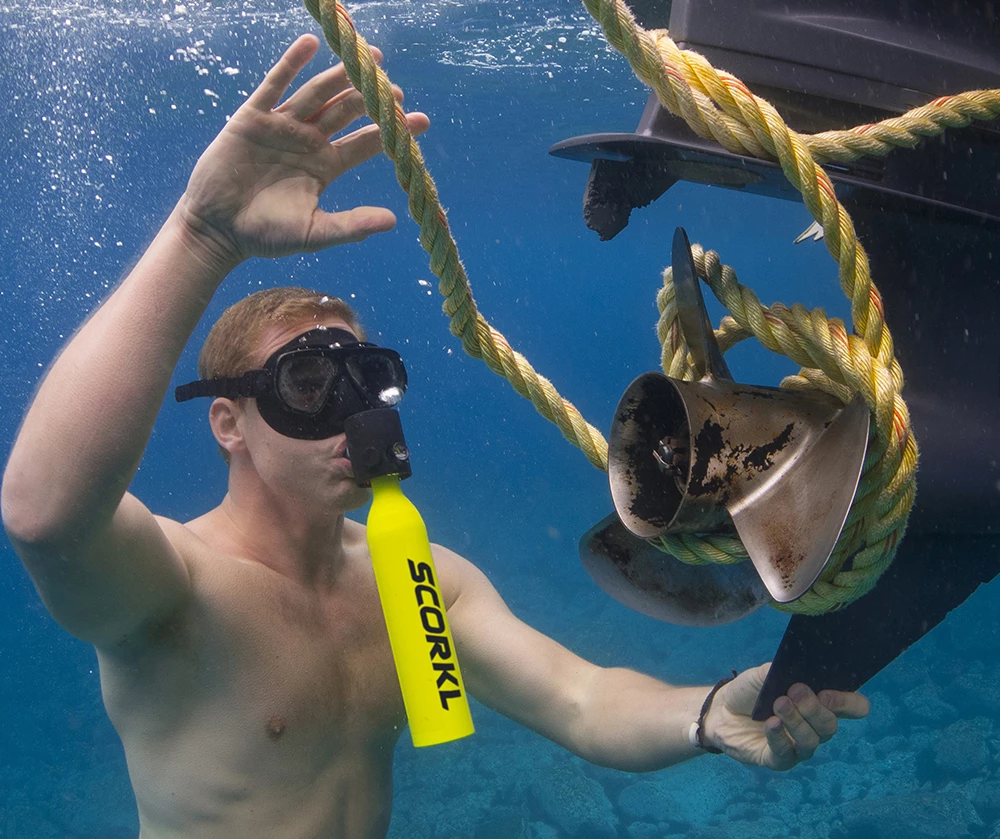
New worlds of exploration
The Scorkl offers new worlds of exploration. Instead of holding your breath for 10 to 20 seconds for each exploratory venture underwater as you would do without assistance, the Scorkl expands your underwater range by 30 to 60 times. You can see and do a lot more in that time frame.
Scorkl founder David Hallamore says of the claimed 10 minute range, "it's easier to say 'up to 10 minutes' because it's easily understandable, but it's a complex equation and how long you spend underwater on a Scorkl-full of air will depend on how fast you are breathing, how big your lungs are, how hard you're working, how cold it is, ... so it might be less than 10 minutes." It might also be more, and maybe a lot more depending on how you use it.
The Scorkl regulator is always-on, so it is a breathe-on-demand system which combines with the built-in pressure gauge to show how much air is left. Hence, you can use it as an on-demand, underwater range-extender.
Hallamore has tested the Scorkl in many different locations and applications since the first working samples were completed in August 2016, and cites spear-fishing as a Scorkl application with significant benefits for the user.

"If you're spear-fishing with a Skorkl on your belt, you're doing your normal exploration, going up and down and looking, and when you find what you're looking for, say a group of crayfish, then you deploy the Scorkl and you can go down and clean up in two minutes and the job is done," said Hallamore. "You put it back on your belt, go looking for another 10 minutes, find more crayfish and you can unclip it from your belt and go again.
"Using it that way, it's possible to end up using it for an hour and a half, but only intermittently when you need it. It can significantly increase your catch working that way because you're using it like a range-extender. The 10 minute range can be greatly extended if you use it in bursts."
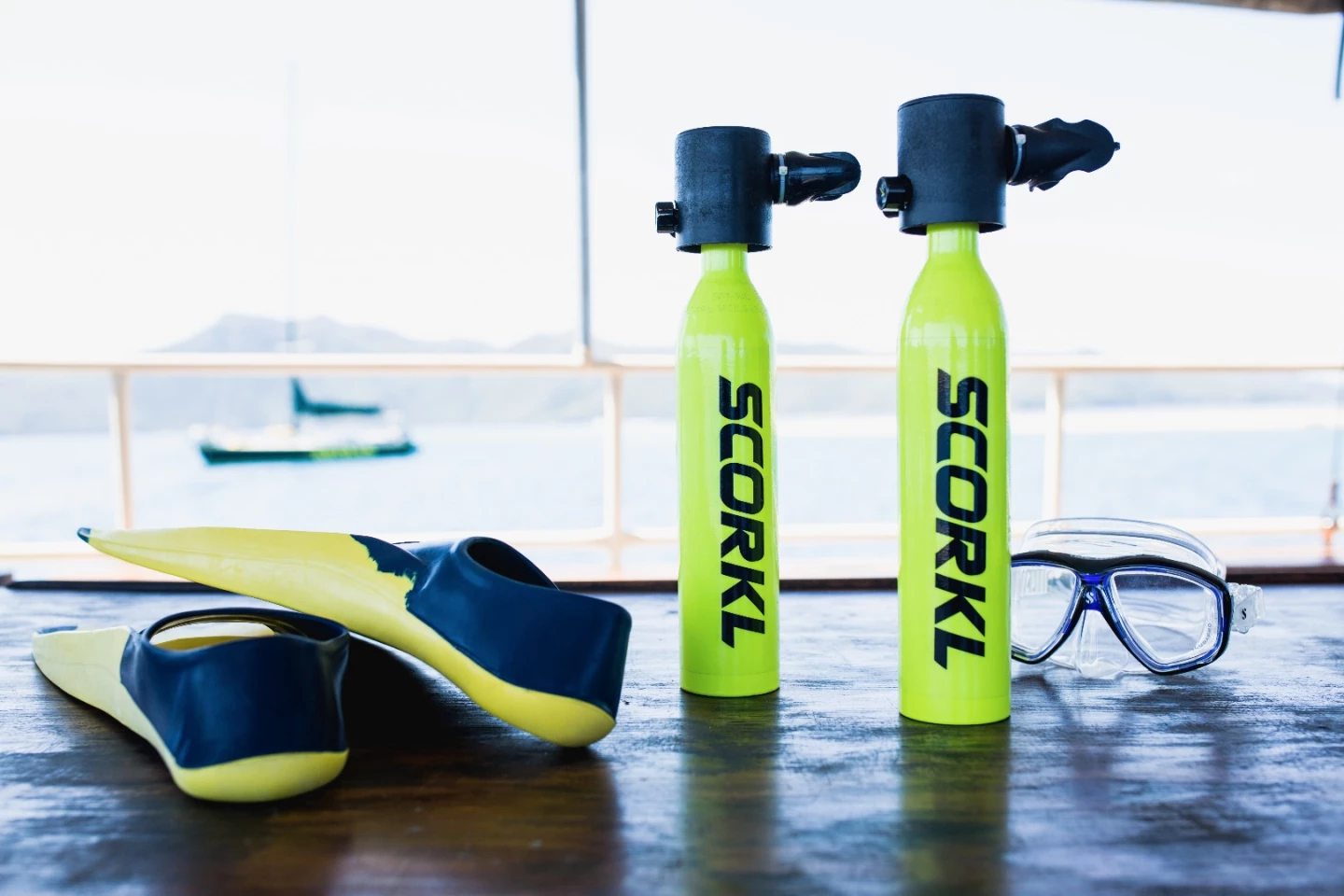
"Scorkl opens up a whole new world of underwater adventures at a fraction of the cost and hassle of traditional diving equipment, so it is going to be used by many people who want the capability but could never justify the cost, or weight, or inconvenience," Hallamore explained.
"If you're a recreational snorkeler, we've just made your day, because you can now move in three dimensions instead of two for 10 minutes at a time."
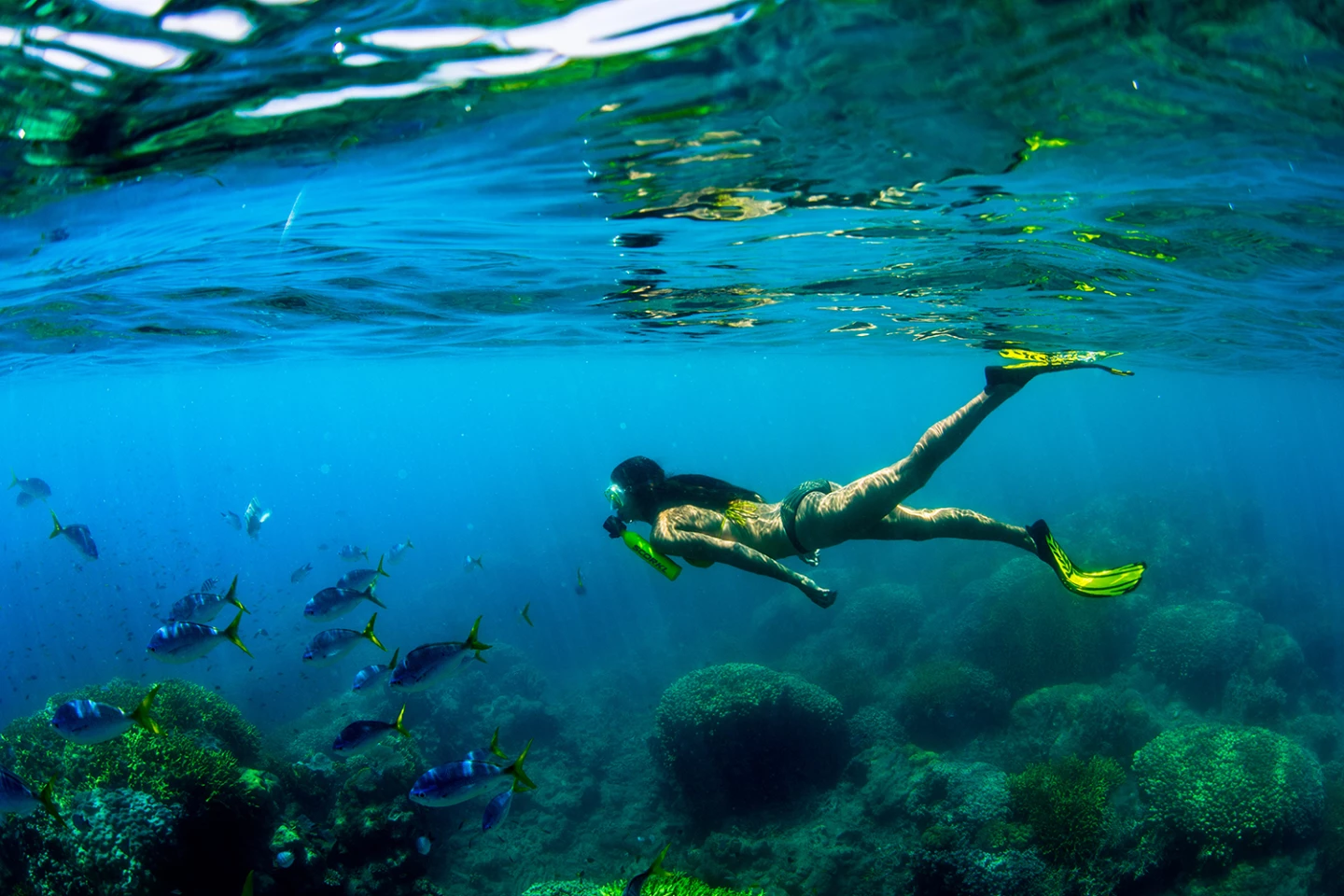
"There are millions of spearfishing enthusiasts in the world too, and their capabilities just increased too."
"I can't wait to see what Freedivers do with it too, but we believe the people who will benefit most, and be our biggest customers, will be boat-owners," said Hallamore.
"People have been suggesting there are many marketplaces that will see benefits from the Scorkl. Things like Special Forces, rescue helicopters, and the surf life saving movement are all logical end users, though there is specialist military equipment in this space for this purpose already, so it might be that we're not expensive enough for the military.
"For any kind of first responder, there are potential uses, because you don't need to be underwater to need clean air. It might be useful for firemen to have one on their belt in case they come across people in a burning building who are struggling for air.
"A pre-filled Scorkl will most likely become another tool to go in the emergency toolkit alongside the defibrillator and other tools you might only use occasionally, though I can see many situations where having one clipped to your belt might be a lifesaver.
"With boat owners though, it makes everything more convenient. If you just want to unfurl an anchor from a reef, it's there to provide you the few minutes you need to do the work in one take."
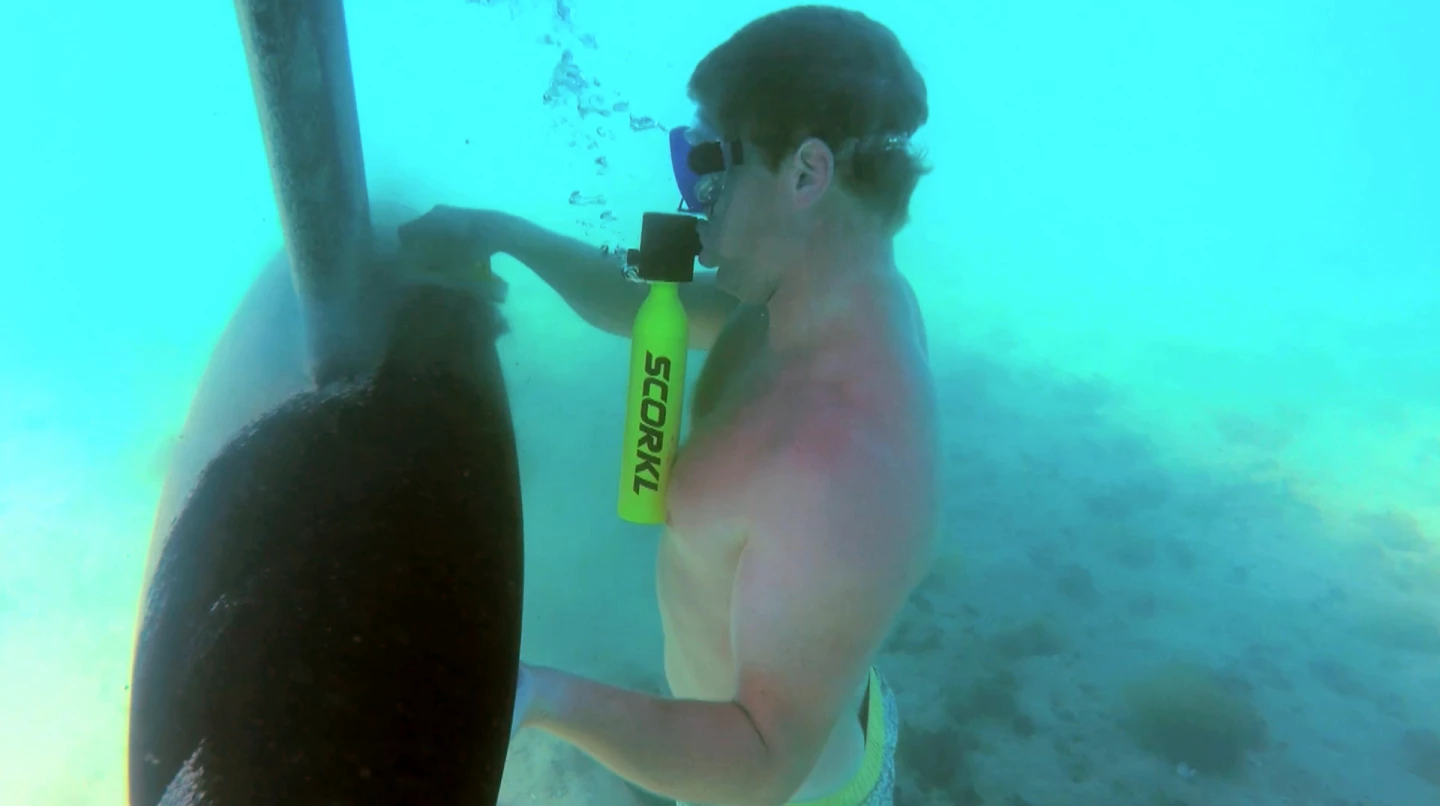
"If you have a yacht, the keel can get dirty, and before a race, you need to get under the water and scrub it because it can give you an extra few knots of speed," continued Hallamore. "So a lot of boaties have seen the Skorkl and become very excited because instead of bringing in a scuba diver to clean the hull and keel, or just not do it at all, you can now do it yourself very easily.
"Once it is pumped up, a Scorkl will sit happily in your toolbox waiting for an opportunity to be of use."
So where did the idea come from?
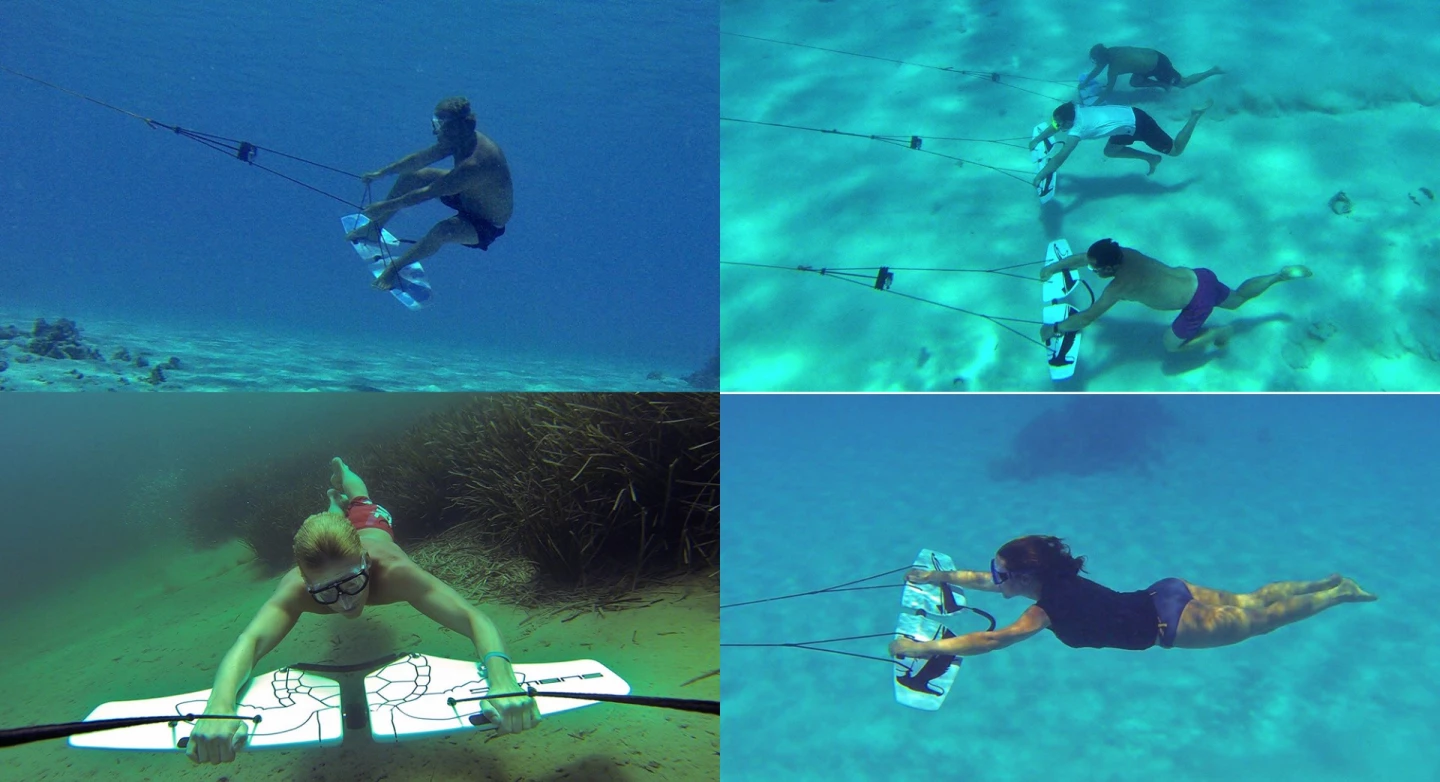
Hallamore got the idea while looking at another product. "The catalyst for the idea came from my interest in a product called Subwing which is towed behind a boat and enables you to move up and down and left-right using the flaps ... and I was wondering if there any point in buying one if you could only stay underwater for 15 to 30 seconds at a time."
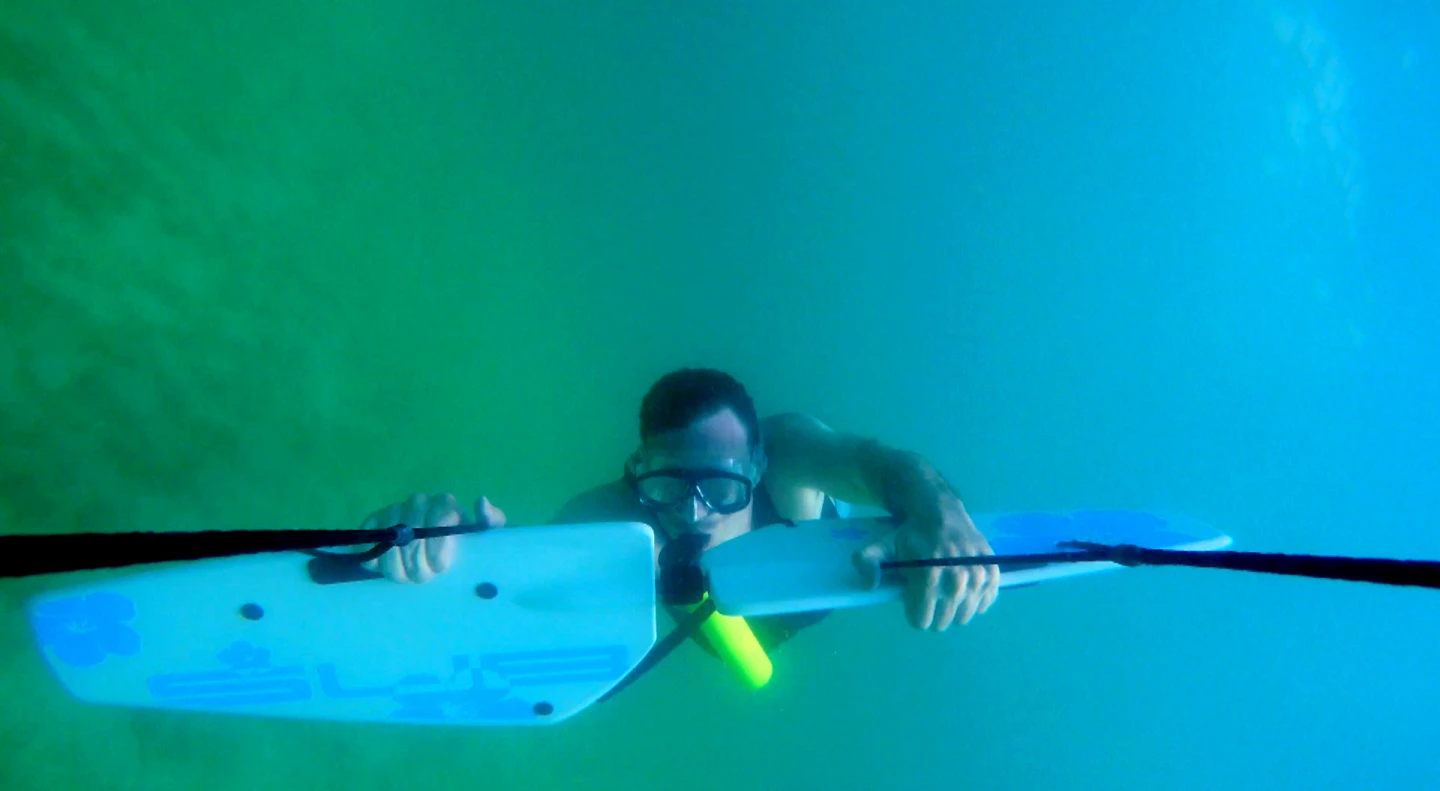
"That led to me thinking about a way to be able to stay underwater longer. If I was going to buy a Subwing, I wanted to be able to stay underwater for at least a few minutes and nothing was available in the marketplace that really fit the bill of being portable and small enough to not get in the way."
So that was the kernel of the idea for the Scorkl, we asked what took it from there into a commercial product?
"The lightbulb moment was working out that I could build my own high pressure pump and turn the whole thing into a completely independent, off-the-grid, adventure kit."

"There are smaller scuba tanks available but you have to fill them with a compressor or another scuba tank and if you don't have all that expensive equipment lying around, then you just can't do it.
"So being able to pair the Scorkl with this high pressure hand pump was the point where we recognized the product fully.
"It wasn't easy, but high pressure hand pumps already existed for pneumatic rifles so once we'd looked at that, we knew we had the technology to complete the adventure kit. We added a filter which is important because you're breathing that air, and set about making it work."
The Scorkl launches today on Kickstarter at $200. If all goes to plan it will launch with a $300 list price for a single unit.
Here's the promo video:
Kickstarter Page: Scorkl
